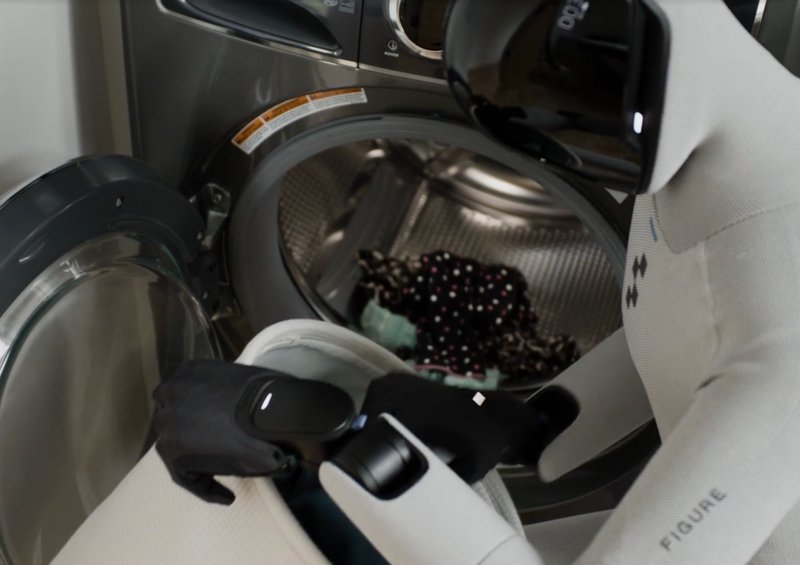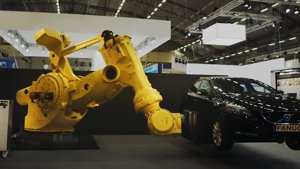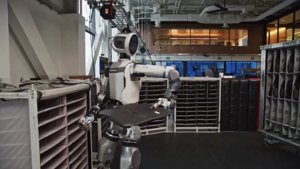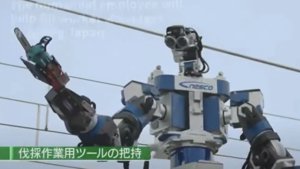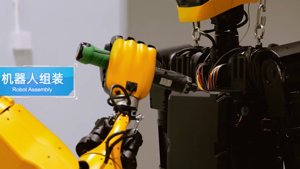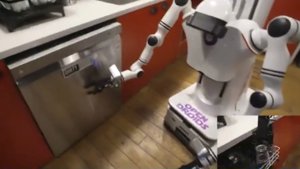Overview
Just as we were settling into a comfortable dystopia populated by a healthy number of bipedal curiosities – thank you, sci-fi blockbusters – another contender has decided to grace us with its presence. Ladies and gentlemen, allow me to introduce Figure AI, Inc., the latest brainchild from the perpetually restless mind of Brett Adcock. This is a man who, it seems, views conjuring multi-billion-dollar empires in electric aviation and talent marketplaces as mere palate cleansers. Launched with a bang in 2022, Figure isn’t simply dabbling in robotics; it’s on a full-throttle sprint towards a future where humanoid labour doesn’t just augment us, but perhaps, with a polite digital cough, eventually replaces us in roles deemed too dangerous, mind-numbingly dull, or simply impossible to fill with flesh-and-blood.
And with all the subtlety of a particularly enthusiastic rocket launch, Figure has already amassed a frankly obscene war chest of funding, bankrolled by a veritable who’s who of tech royalty. We’re talking the likes of Jeff Bezos, Microsoft, Nvidia, and OpenAI – names that typically only appear together on the Forbes rich list or in the opening credits of a Bond villain’s origin story. This isn’t just loose change found down the back of a silicon sofa; it’s a multi-billion-dollar wager that Figure can finally crack the elusive code of general-purpose robotics and unleash a tireless fleet of autonomous workers into our factories, our warehouses, and, if their vision holds, eventually our very own living rooms. Their stated mission? Nothing less than deploying billions of humanoids to solve global labour shortages – a goal so audaciously ambitious it practically whispers ‘galactic domination’ under its breath. Yet, in a technological graveyard littered with the broken gears and rusted ambitions of past endeavours, one has to wonder: does Figure truly possess the Rosetta Stone of robotics, or are they merely constructing the world’s most exquisitely over-engineered, and hideously expensive, coffee-maker?
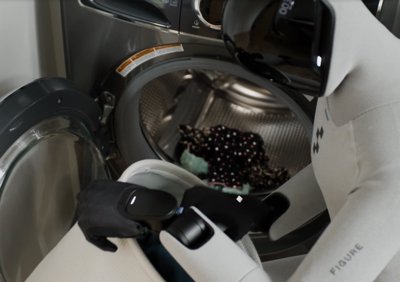
Key Points
- Founded: 2022 by serial entrepreneur Brett Adcock in San Jose, California.
- Focus: Developing commercially viable, general-purpose autonomous humanoid robots, specifically engineered to tackle persistent global labour shortages.
- Key Products: Iterative humanoid models, including Figure 01, Figure 02, and the recently unveiled Figure 03, designed for industrial and eventually domestic use.
- Funding: Has successfully secured over $1.75 billion in investment, with a recent funding round catapulting the company’s valuation to a staggering $39 billion. Marquee investors include OpenAI, Microsoft, Nvidia, Intel, and Jeff Bezos.
- Leadership: CEO Brett Adcock, a seasoned entrepreneur, previously founded the eVTOL pioneer Archer Aviation (NYSE: ACHR) and the highly successful talent marketplace Vettery.
- Technology Stack: The robots operate on the sophisticated Helix AI system, an advanced vision-language-action (VLA) model that empowers them to learn from and intelligently interact with their dynamic environments.
- Notable Partnerships: A groundbreaking agreement with BMW Manufacturing for the deployment of humanoids within its South Carolina automotive plant, coupled with a strategic collaboration with OpenAI to co-develop cutting-edge AI models specifically for robotics applications.
- Competitors: Currently navigating a rapidly expanding field of formidable rivals, including Tesla’s much-hyped Optimus, Agility Robotics’ practical Digit, and Boston Dynamics’ acrobatic, albeit still largely research-focused, Atlas.
Analysis
History and Evolution
Brett Adcock, it must be said, is not a man prone to half-measures. Having already masterminded the successful build-and-exit of the recruiting marketplace Vettery for a cool $100 million-plus, and then shepherding electric aircraft pioneer Archer Aviation onto the public markets with a $2.7 billion valuation, his sharp pivot to robotics in 2022 felt less like a career change and more like an inevitable, almost preordained, escalation. Figure AI didn’t emerge from a dusty garage; it burst forth with a crystal-clear, aggressively ambitious vision: to decisively tackle global labour shortages with an army of humanoid robots.
The company’s trajectory since then has been nothing short of meteoric. Adcock, with the strategic precision of a chess grandmaster, assembled a ‘dream team’ of engineers, not just recruited, but cherry-picked from the hallowed, often secretive, halls of Boston Dynamics, Tesla, and Google DeepMind. This unprecedented concentration of talent enabled Figure to move at a truly blistering pace, swiftly unveiling its inaugural prototype, Figure 01, and then rapidly iterating through to the more sophisticated Figure 02 and the recently revealed Figure 03. This astonishingly rapid evolution, generously fuelled by the seemingly bottomless coffers of Silicon Valley, has propelled this less-than-three-year-old startup directly into the undisputed top tier of global robotics contenders.
Technology and Innovation
Beating at the very core of every Figure robot is Helix, the company’s meticulously crafted, proprietary AI system. This isn’t your grandad’s robot, mind you, content with tirelessly executing pre-programmed routines. No, Figure’s humanoids are engineered to learn, evolving with every interaction. By ingeniously marrying its bespoke robotics software with the colossal, large-scale AI models forged in collaboration with OpenAI, these mechanical marvels can effortlessly process both visual and linguistic information, translating abstract requests into tangible, autonomous actions. In essence, you could simply tell a Figure robot to perform a task, and its sophisticated vision-language-action model would then, with uncanny precision, convert your spoken word into seamless physical execution.
And let’s not forget the hardware, which is, frankly, equally impressive. These fully electric automatons stand a respectable 5'6" tall, capable of effortlessly lugging a 20 kg payload – enough to make a delivery driver reconsider their career choices. The latest iteration, the Figure 03, is specifically earmarked for eventual domestic deployment, boasting meticulously redesigned hands equipped with tactile sensors so exquisitely sensitive they can detect forces as minuscule as three grams. This delicate touch is complemented by an overhauled camera system, granting them even sharper perception. Crucially, by developing vital components like actuators and control systems entirely in-house, Figure maintains an iron grip over its entire hardware stack, allowing for a blistering pace of iteration that leaves many competitors, reliant on external suppliers, metaphorically eating dust.
Market Position
Figure, with the confident swagger of a new heavyweight contender, has stormed into a market that has, seemingly overnight, become astonishingly crowded. Its principal competitors form an eclectic, formidable roster: there’s Tesla’s Optimus, which, despite its nascent stage, benefits immensely from the sheer manufacturing might of its automotive titan parent; then we have Agility Robotics’ Digit, already clocking in hours within the sprawling Amazon warehouses, a testament to its practical utility; and, of course, the venerable granddaddy of dynamic robotics, Boston Dynamics’ Atlas, which, while undeniably spectacular, still largely operates as a highly sophisticated research platform.
Figure’s undeniable ace in the hole, however, is its refreshingly aggressive commercial strategy. While some of its rivals are still meticulously perfecting their parkour routines and acrobatic backflips, Figure has already inked a landmark deal to deploy its humanoids at a BMW manufacturing plant in South Carolina. This partnership, a genuine first of its kind, doesn’t just nudge the conversation; it shoves it unequivocally from the realm of ‘what if’ directly into the gritty reality of ‘right now’. This provides Figure with not just invaluable real-world data, but also a critical first-mover advantage within the fiercely competitive automotive sector. And while the initial deployment might be limited in scope, it stands as an immensely powerful proof of concept for both eager investors and discerning potential customers alike.
Verdict
Figure AI, in every gleaming bolt and whirring servo, embodies the quintessential Silicon Valley ethos: go big, swing for the fences, and do it all with a veritable mountain of cash and an all-star team plucked from the industry’s elite. The company has, to its immense credit, executed its initial roadmap with an almost unnerving flawlessness, hurtling from ambitious concept to bona fide commercial pilot in what feels like warp speed. Its magnetic ability to attract both top-tier talent and eye-watering investment is beyond dispute, and that pivotal partnership with BMW bestows upon it a tangible legitimacy that its rivals, for now, can only envy. Make no mistake: they are constructing a truly serious contender for the impending future of automated labour.
Yet, and here’s where the rubber meets the proverbial road, the chasm stretching between a tightly controlled pilot programme and the dizzying scale of mass-market deployment remains vast, treacherous, and utterly riddled with unforeseen challenges. The hardware, quite simply, must be robust enough to endure relentless 24/7 operation. The AI, in turn, must possess the resilience and adaptability to navigate the often chaotic, unpredictable reality of a bustling factory floor. And, perhaps most critically, the entire intricate system must prove itself economically viable, not just technologically impressive. The hype surrounding Figure is, without question, immense. But the true, grinding, and often deeply unglamorous work of scaling, refining, and hardening this pioneering technology has, in the grand scheme of things, only just begun.
Ultimately, Figure AI is a gamble of truly epic proportions – high stakes, with the potential for stratospheric rewards. Should Brett Adcock and his audacious team pull this off, they won’t merely have built another successful company; they will have fundamentally, irrevocably reshaped the very fabric of the global economy. If they falter, however, they’ll merely find themselves the proud, if slightly embarrassed, proprietors of the most exquisitely sophisticated and eye-wateringly expensive warehouse assistants ever conceived by humankind. For now, they stand as the undisputed heavyweight champions of expectation-raising. Let’s just fervently hope their robots are strong enough to lift the colossal weight of it all.
